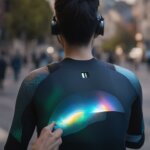Table of Contents
The US National Highway Traffic Safety Administration (NHTSA) has taken a significant step towards preventing drunk driving with the initiation of a new rule. This rule would mandate car manufacturers to incorporate advanced technology in vehicles to detect and prevent impaired driving, aiming to reduce the more than 10,000 annual deaths caused by drunk driving incidents.
The NHTSA has now begun the process of gathering information on potential technologies that can be used to prevent individuals under the influence of alcohol from starting a vehicle. These technologies include breath- or touch-based sensors to detect alcohol and cameras that monitor eye movements to determine intoxication.
However, the NHTSA emphasizes that before these technologies can be mandated, their accuracy and effectiveness must be assured. The incorporation of these alcohol monitoring systems would be a crucial advancement in vehicle technology, contributing to the prevention of impaired driving and enhancing overall road safety.
Stay tuned for more updates on the NHTSA’s groundbreaking efforts in preventing drunk driving and the potential implications for automotive safety.
Importance of NHTSA’s Drunk Driving Prevention Rule
The implementation of the NHTSA’s rule mandating the detection of drunk drivers in vehicles could have significant implications for automotive safety. This rule would provide a standardized framework for detecting and preventing impaired driving, ensuring that all vehicles are equipped with the necessary technology to address this issue.
By requiring car manufacturers to integrate sobriety detection technology into their vehicles, this rule would enhance drunk driving enforcement and serve as a deterrent to individuals who may consider operating a vehicle while under the influence of alcohol.
Adopting these technologies would also align with NHTSA guidelines and contribute to overall road safety by reducing the number of alcohol-impaired driving accidents.
Challenges and considerations in implementing the rule
While the NHTSA’s initiative to implement a rule for detecting drunk drivers in vehicles is a significant step towards enhancing road safety, there are some challenges and considerations that need to be addressed.
One of the concerns is the limitation of the technology itself, as its accuracy and reliability need to be thoroughly tested before it can be mandated. It is crucial to ensure that the technology is capable of accurately detecting impaired individuals and differentiating them from sober drivers, without leading to false positives.
Another important consideration is the privacy concerns surrounding the use of sensors and cameras in vehicles. The implementation of sobriety detection technology raises questions about the collection and storage of personal data, which need to be carefully addressed to protect the privacy of individuals.
Additionally, public acceptance of these technologies will play a crucial role in their successful implementation. It is essential to educate the public about the benefits of these technologies for road safety and address any concerns or misconceptions they may have. The perceived effectiveness and reliability of the technology will determine the level of public acceptance.
To successfully implement this rule and overcome these challenges, a comprehensive regulatory framework should be developed. This framework will provide guidelines for addressing technology limitations, privacy concerns, and ensuring public acceptance. It will help create a standardized approach for integrating sobriety detection technology into vehicles, making the roads safer for everyone.
FAQ
What does the NHTSA’s rule for cars to detect drunk drivers entail?
The NHTSA’s rule aims to require car manufacturers to incorporate technology in vehicles that can detect and prevent drunk driving.
Why is the NHTSA implementing this rule?
The rule is being implemented in response to the high number of deaths caused by drunk driving, with over 10,000 deaths annually in the US.
What technologies are being considered to detect impaired individuals?
Potential technologies include breath- or touch-based sensors to detect alcohol, as well as cameras that monitor eye movements to determine intoxication.
Will the NHTSA mandate these technologies in all vehicles?
The NHTSA emphasizes that the accuracy and effectiveness of these technologies must be assured before mandating their inclusion in vehicles.
How will the NHTSA’s rule enhance automotive safety?
By requiring car manufacturers to integrate sobriety detection technology into their vehicles, this rule will enhance drunk driving enforcement and serve as a deterrent to impaired driving.
What are some challenges and considerations in implementing the rule?
Challenges include the limitation of technology accuracy and reliability, concerns about false positives, privacy issues, and the need for public acceptance of these technologies.
How can the challenges be addressed?
To successfully implement the rule, a comprehensive regulatory framework should be developed to address the challenges and ensure the smooth integration of sobriety detection technology in vehicles.







